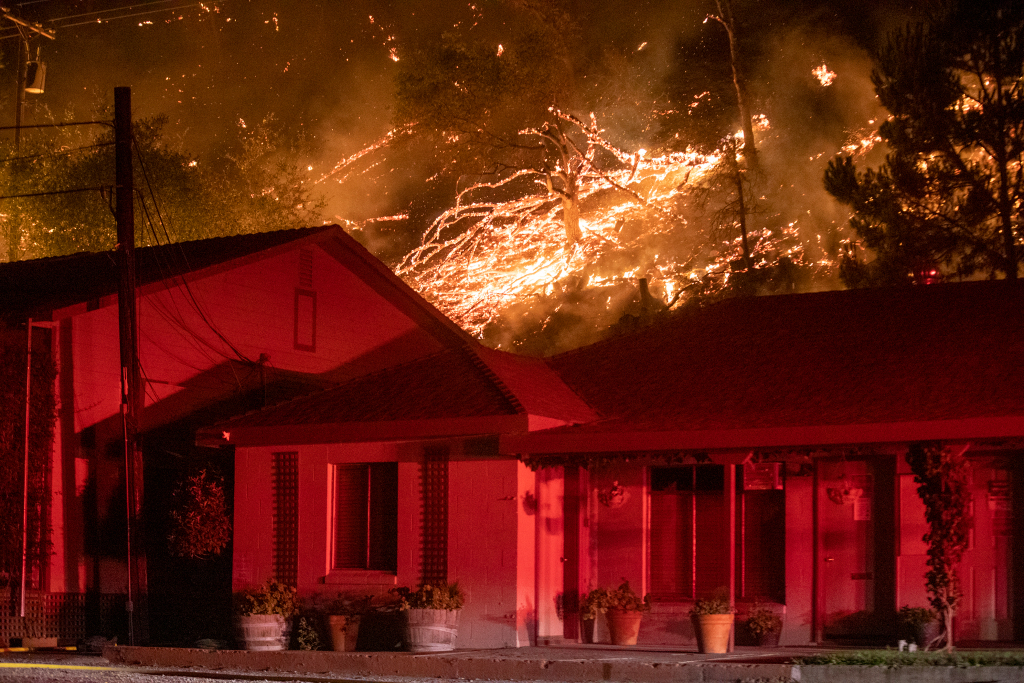Some Yolo County residents didn’t get evacuation alerts from the emergency alert system as fires burned mere miles away from their homes and property due to robocall blocking, officials say.
County officials addressed county residents’ concerns in a virtual town hall held Friday afternoon. The meeting was hosted by Supervisor Don Saylor, who is responsible for District 2, which includes the city of Winters where evacuation zones 58 and 60 are located.
The LNU Lightning Complex wildfires have burned through 373,324 acres in Yolo, Solano, Sonoma, Napa and Lake counties. The complex is 41% contained as of Saturday afternoon, according to Cal Fire.
In the early morning of Aug. 19, the fires came dangerously close to Winters’ surrounding rural areas, prompting mandatory and advisory evacuation orders in both Yolo and Solano counties, which border each other.
During the meeting, the county’s Office of Emergency Services Manager Dana Carey said on that day, 100% of the voice call alerts sent to county residents in zones 58 and 60, failed.
According to a timeline of the events of the early hours of Aug. 19 laid out by Carey during the meeting, her office was first alerted by Cal Fire of the possible need to send out evacuation orders just after midnight. Advisory notifications were sent out around 2 a.m. and turned into mandatory just before 4 a.m.
Debra DeAngelo is a Winters resident who boards her horses at Emerald Hill Horse Ranch off Highway 128, in an area where the fire was burning just across the street. DeAngelo said neither she nor her husband received evacuation alerts that morning, and that she had to evacuate her horses well before 4 a.m.
Part of the reason why the phone calls failed may be due to legislation aimed at reducing robocalls, Carey said.
Senate Bill 208, also known as the Consumer Call Protection Act, was signed into law by Gov. Gavin Newsom in 2019. The bill was designed to protect consumers from unwanted robocalls, allowing telecommunications agencies to employ call blocking.
In order to send out the emergency alert phone calls, the county was using (999) 999-9999, which Carey says would be registered by telephone providers as a robocall. In October, the county bought a new number, (833) 422-5253, which would not register as a robocall.
However, the emergency alert phone calls sent out on Aug. 19 were sent from the 9999 number, something that the county is working with the system’s platform, Everbridge, to correct. Carey also confirmed that the phone call notification system, run through Everbridge, does not override do not disturb phone settings.
“The mass notification system is a robocall,” Carey said. “All our voice calls got scrubbed.”
The county’s emergency notification system offers residents a few different ways of being notified in the event of an emergency, including phone calls, text messages and emails. On Aug. 19, sheriff deputies also went door-to-door to alert those in mandatory evacuation zones.
For residents who say they didn’t receive text alerts, Carey said her office is investigating the issue. She added that the success rate for non-voice pathways that morning was 36 to 40%, which is higher than average.
Sarah Johnson is a resident of Emerald Hill Horse Ranch and works with California Strategies and Advocacy, a lobbying firm in Sacramento. She says it’s thanks to the boarders at the ranch she and her partner were able to evacuate in time on Aug. 19.
Johnson said she didn’t receive an alert from the county until around 4 a.m., hours after she and others had gotten away.
In the aftermath of the fires, she said she wants to help the community make sure the emergency alert system doesn’t fail them again. Johnson set up a Google Form collecting responses from residents of Yolo, Napa, Solano and other nearby counties to document their experience with evacuating and with emergency system alerts in the past week.
“The issue of robocall-blocking technology is definitely something to look into and must be addressed,” DeAngelo said. “I approve of Saylor’s mention of redundant alert measures. I am also encouraged by Carey’s mention of overlapping warnings between counties when something happening on one side of the county line affects people on the other side of a county line.”
During the meeting, Saylor noted that “redundancy is our friend,” emphasizing that the county cannot rely on one sole mean of relaying emergency messages.
Though Saylor, Carey and the county’s public information officer Jenny Tan answered pre-screened questions submitted prior to the start of the town hall, only one resident was actually given a chance to speak.
Kate Laddish thanked the officials for the opportunity to talk about the issue, but noted that the consequences of the failed emergency alert system could have been worse, particularly for seniors and those with accessibility issues.
“If this fire had come into town, there would have been tragic loss of life,” Laddish said. “I would really welcome an opportunity to continue working on that.”
Tan noted the county reaches out to individuals with accessibility issues ahead of time to ensure that they are prepared in the event of an emergency evacuation, and so they can receive a notice that works for them.
The county urges all residents to sign up for the emergency notification system, which can be done at yolo-alert.org. County residents wanting to look up their evacuation zone can do so at evacuate.yolocounty.org.










